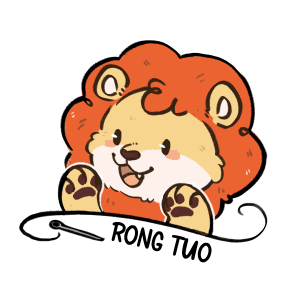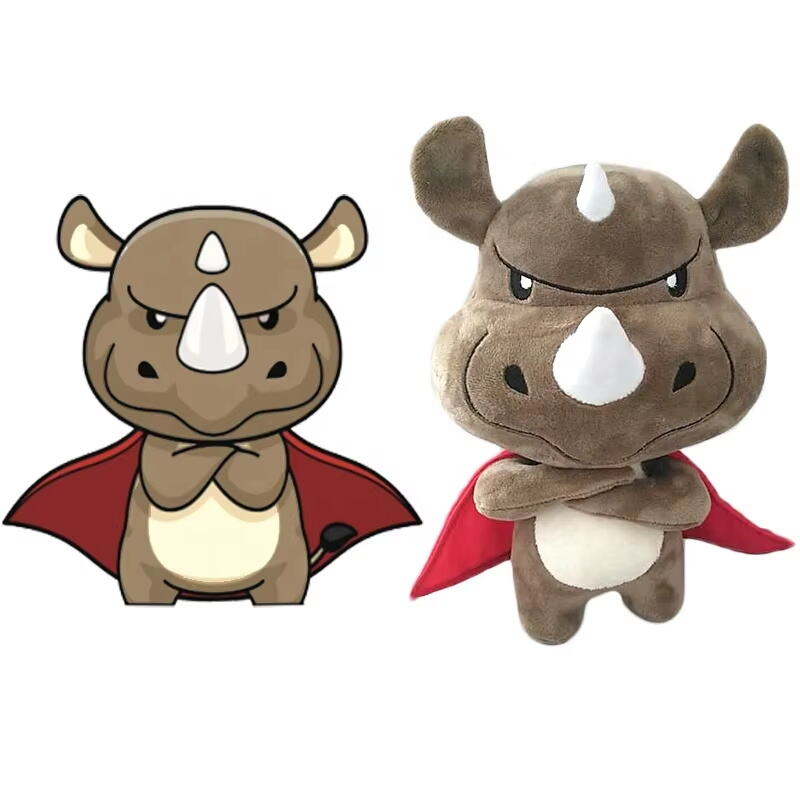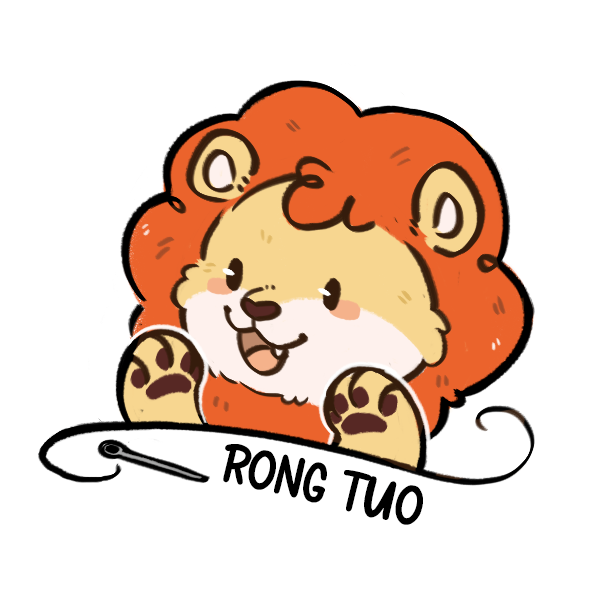חיות בד מעושנות מביאות שמחה לילדים ולמבוגרים גם יחד, הן משמשות כחברים לנחמה ואף לעיתים הופכות לנכסים יקרים. אנשים אוהבים מאוד צעצועים אלו, ולכן חשוב מאוד להבטיח שהן יחזקו לאורך זמן. חיות בד איכותיות חייבות לעמוד בכל מיני מواقפים - ידיים קטנות של ילדים שטורפות אותן כל הזמן, שטיפות חוזרות אחרי בזבוזי הארוחות, וכל מה שהחיים מטיחים בהן. כשצעצוע בד מצליח לעמוד בכל הניסיונות הללו, הוא נשאר בטוח לשחק איתו, ומשמר את המראה והפונקציונליות שלו לאורך שנים ולא רק שבועות ספורות. ההורים מעריכים את העובדה שחברם האהוב של הילד שלהם לא יתפורר אחרי יום קשה אחד בקבוצת הילדים.
יותר הורים מחפשים צעצועים ממש איכותיים, כשהם מודעים למה שזמין בימים אלה. רובם רוצים דברים עשויים מחומרים שנגמרים בכל מיני ניהול קשה כי ילדים נוטים להתייחס צעצועים שלהם די בקשוח. יצרנים שמו לב ושים עכשיו הרבה דגש על כמה זמן מוצריהם באמת נמשכים. מחקרים מראים שכאשר צעצועי פלש עולים על משחק רגיל, משפחות מקבלות יותר כסף עבור הכסף שלהן. הצעצועים האלה פשוט לא מתפרקים מהר, אז יש פחות צורך להמשיך לקנות מחליפים כל כמה חודשים. השילוב של בטיחות עבור ידיים קטנות וחיסכון כסף בטווח הארוך אומר צעצועים עמידים מפורסמים הופכים פופולריים בקרב קונים חכמים שאכפת להם הן איכות והן ערך.
폼 צפוף בגוון גבוה עבור התנגדות
יתרונות של פום צפוף בגוון גבוה בצעצועי פלוש
בנוגע לייצור צעצועי פלוש שנותנים את המבחן של הזמן, תפקידה של ספוג צפוף מאוד הוא מרכזי. היתרונות העיקריים? הצעצועים הללו שומרים על צורתם בצורה טובה בהרבה יותר מאשר אחרים, ולכן הם נראים טובים לאורך זמן ולא קורסים כשילדים משחקים איתם כל היום. מה שמייחד את הספוג הזה הוא ההתנגדות שלו לכוחות לחיצה. גם אם מישהו יושב על הצעצוע או לחץ אותו חזק במהלך משחק סוער, הוא חוזר כמעט תמיד לצורתו המקורית. ספוג רגיל פשוט נהרס אחרי שימוש חוזר, אך הגרסה של ספוג צפוף מאוד מצליחה לעמוד בפני הנזקים בצורה טובה בהרבה. לכן אנו רואים כל כך הרבה בובות מילאוי שנותרות רכות ונוחות לשימוש לאורך שנים, במקום להישאר שטוחות ולא מושכות. גם יצרנים קפצו ל trendu הזה, והחליפו לספוג צפוף יותר, מאחר שההורים מחפשים צעצועים שיחזיקו לאורך מחזורי כביסה רבים וניסויים עם הילדים הקטנים, מבלי לאבד את הקסם שלהם.
איך הוא מתקשה בפני לחץ ומשנות צורה
לחש דחיסות גבוהה יש תכונות קפיצה די טובות, משהו חשוב כשמדובר לעמוד נגד לחץ ולמחוץ. מה שהופך את החומר הזה למיוחד הוא איך שהוא מתמודד עם הלחיצה שוב ושוב מבלי לשנות את הצורה הרבה, אז זה הפך לחומר עבור יצירת חיות ממולאדות עמידות. בדיקות מראות שהדרך בה המולקולות מסודרות בתוך קצף זה מפצה את המשקל באופן שווה על פני השטח, ומונעת מנקודות חלשות קטנות להיווצר לילדים שאוהבים ללחוץ את הצעצועים שלהם חזק בזמן שהם משחקים, תכונות אלה משנות את כל ההבדל. ההורים בהחלט מעריכים את זה כי הם לא צריכים להחליף את הפריצים השבורים כל כמה שבועות יותר. רק תחשוב על חיסכון כסף בטווח הארוך במקום לקנות כל הזמן חדשים בכל פעם האהובים הישנים להישבר משימוש קבוע ב בית .
מילוי מיקרופיבר לשימור צורה
יתרונות של מיקרופיבר כחומר מילוי
בנוגע לחומר הפנימי בצעפפונים, מיקרופיבר באמת מוכיחה את עצמה, שכן היא כל כך קלה אך עדיין מספקת קיבולת ספוג טובה. ילדים יכולים בקלות להרים צעצועים אלו מבלי להתאמץ, ובנוסף הם חשים את הרכות המופלאה שלה על העור. יתרון נוסף גדול? מיקרופיבר אינה גורמת לאллерגיות, מה שחשוב להורים כשמקנים צעצועים לילדים עם עור רגיש. בנוסף, החומר סופג לחות בצורה טובה למדי, מה שאומר שהצעפפונים האהובים נשארים שלמים גם לאחר מספר רחיצות במכונה. האופן שבו סיבי המיקרופיבר עובדים יחד עוזר לשמור על הצעפפון נפוח ולא שטוח גם לאחר סדרת רחיצות ארוכה. לייצרנים שמייצרים צעצועים איכותיים שנועדו להחזיק מעבר לכמה חודשים על מדפי החנות, מיקרופיבר פשוט היא בחירה עסקית נכונה.
היכולת לסבול לחץ
מילוי מיקרו-פיבר עובד ממש טוב בהפצה אחידה של לחץ, כך שצעצועים פרווה שומרים על צורתם טוב יותר ולא מתחילים להישרט לאחר זמן מה של משחק. מחקרים הראו שצעצועים שממולאים במיקרו-פיבר עמידים יותר בהשוואה לצעצועים ישנים שממולאים בפוליאסטר רגיל, במיוחד במהלך פעולות משחק קשות. למה? בגלל שמיקרו-פיבר פשוט לא מישט כקל, ומשאיר את הצעצוע נראֶה טוב גם לאחר זמן רב של שימוש. בדיוק מסיבה זו, יצרנים רבים שמחפשים לייצור צעצועים פרווה איכותיים בוחרים במיקרו-פיבר כחומר מועדף. הורים מעריכים צעצועים שנראים טריים וחדשים לאורך חודשים ולא שבועות, מה שעושה את הבחירה במיקרו-פיבר להימשך גם מבחינת ערך תמורה לכסף.
זיכרון פום לתוחלת חיים ארוכה
תכונות ייחודיות של זיכרון פום
שעווה זיכרון הפכה לפופולרית בתקופה האחרונה, בזכות התחושה שלה כשנלחצת ומתאפסת, מה שעושה אותה למושלמת לחומת בובות צעצוע. כשילדים מחבקים את הצעצועים האלה, החומר מתעצב סביב גופן הקטן ואז חוזר לצורתו, כך שהבובות נשארות נוחות גם אחרי המון לחיצות. מה שמميز במיוחד הוא עד כמה שעווה זיכרון עמידה בפני פגיעות, ולכן היא מושלמת לחיבוקים בלילה, כשפעמים רבות התינוקות זורקים את עצמם על הצעצועים האהובים עליהם. גם ההורים שמים לב לדבר מעניין – הרבה ילדים יוצרים קשר חזק יותר עם החברים הרכים האלה, כי הם מרגישים פשוט מושלם על העור במהלך משחק. אנחנו רואים את החומר הזה מופיע יותר ויותר בצעצועים מיוחדים שפותחו לנחות מיטבית, במיוחד כשזה מועיל לילדים שנדרשים לתמיכה חושית או שיש להם הבדלים התפתחותיים שגורמים לכך שצעצועים רגילים יהיו לא נוחים או מעיקרים כשיחוו איתם.
איך הוא שומר על צורה תחת לחץ חוזר
מה גורם לפוליאתאן נזכור להיות כל כך מיוחד? ובכן, הוא מגיב אחרת ללחץ וחום בהשוואה לחומרים רגילים, ועוזר לצעצועים לשמור על צורתם גם לאחר ששוחקו איתם לאורך זמן. מחקר מסוים הראה כי כאשר יצרנים משתמשים בפוליאתאן נזכור בצעצועים במקום חומרים סטנדרטיים, הצעצועים הללו עמידים יותר בלחיצה ובכיפוף לאורך זמן. חישבו על אותם בובות ממולאות שאוהבות לחבק כל הלילה או ללחוץ בזמן זעפות. עם פוליאתאן נזכור בפנים, הם נוטים לחזור למראה הרגיל שלהם ברוב המקרים. הורים מעריכים את זה בגלל שהפוליאתאן הנזכר נמשך זמן רב בהשוואה לחלופות זולות יותר. כשחברות שותפות פוליאתאן נזכר בצעצועים ממולאים, הן יוצרות משהו שנושא את מבחן הזמן ולא נופל לחתיכות אחרי כמה שבועות של טיפול גס.
בחירת חומרים חזקים לעמידות
חומרים עמידים כמו קורדורוי וג'ינס
קורדוי וקנבס הופכים לבחירות מובילות ביצור בובות פרווה איכותיות, שכן חומרים אלו פשוט מצליחים לעמוד בזמן טוב יותר. העקביות האמיתית של החומרים הללו מאפשרת לילדים למשוך, למשוך ולהתעלל בהם, מבלי שהבובה תתפרק או תאבד את צורתה. גם ההורים מעריכים את היבט זה, שכן זה מקטין את השכיחות בה הם נאלצים לתקן או להחליף פריטים פגומים, במיוחד כשאין תקציב רזרבי. רוב האנשים שקנו בובות פרווה יודעים מניסיון שchioptions זולות לא נמשכות זמן רב. בובה איכותית שמיוצרת מחומר עמיד תישאר למשך שנים ולא תיזרק לאחר כמה חודשים, מה שעושה אותה שווה כל אגור מושקע.
איך חומרים אלה מתקיימים תחת לחץ
בדל ופשתן עמידים מאוד בפני כל מיני טיפולים קשוחים כמו משיכה וחיכוך. מחקרים מראים שצעצועים בדויים שמיוצרים מחומרים אלו נמשכים הרבה יותר זמן לעומת אפשרויות אחרות, ושמורים על שמחת הילדים מכיוון שהם לא נקרעים בקלות. הכוח של חומרים אלו מקטין את הסיכוי ל образования חורים או לפירוק החומר, מה שמאפשר לשמור על הצעצועים במצב טוב למשך חודשים ולא שבועות ספורות. בנוסף, שני החומרים נמנעים בקלות אחרי בזבוזי זמן הארוחות או הרפתקאות בחוץ, מה שעושה אותם לבחירות מעשיות להורים עסוקים שמחפשים צעצועים שממשיכים להראות טוב גם אחרי הרבה חיבה ותשומת לב.
שיפוץ מחוזק לתמיכה נוספת
החשיבות של שיפוץ מחוזק
החיזוק הנוסף בתפרים הוא מה שקובע עד כמה זמן צעצועי פליש יחזיקו, במיוחד במהלך משחקי סחרחורת של הילדים. תפר כפול נותן לצעצועים האלה את הכוח הנוסף שהם צריכים כדי לעמוד במ graspings ולחיצות מתמידות מבלי להתפרק בפינות. מחקר מצביע על כך שצעצועים עם מבנה כפול מסוג זה נוטים להחזיק הרבה יותר מאשר כאלו עם תפר רגיל, מה שאומר פחות צעצועים שבורים בסך הכול. מחלקות הביקורת באיכות בודקות בפועל את חוזק התפר כחלק מהנהלים הסטנדרטיים שלהן, שכן הן יודעות שההורים מתייחסים גם לבטחה וגם למשך הזמן שבו הצעצוע יישאר שלם. יצרנים מדגישים את התפר החזק על גבי האריזה וחומרי השיווק, שכן קונים רבים מחפשים במכוון את המאפיין הזה כשמקנים צעצועים עמידים לילדים שלהם.
איך זה מגדיל את העמידות של הצעצוע
חוטים מוגזמים עוזרים למנוע מצבים מעיקרים שבהם החורצים נפתחים או שהחוטים מתחילים להתפורר בפינות של בובות פרווה. כשלים קטנים אלו מתרחשים כל הזמן בבובות רגילות. מחקרים מראים שאם יצרנים מחזקים את החורצים הללו, הבובות יכולות לעמוד בטיפול גס יותר במשחק לפני שהן מראות סימני בלאי. רוב ההורים מעריכים קנייה של בובות שלא תתפורرن לאחר כמה שבועות של שימוש רגיל. ההשקעה הנוספת במבנה אומרת שבובות פרווה אלו נמשכות זמן רב יותר מהחלופות הזולות המוצעות בחנויות. חיתוך טוב יותר אינו קשור רק למראה – הוא גם הופך את הבובות לבטוחות יותר לשימוש לאורך זמן על ידי הילדים. תשומת הלב לפרטים הזו יוצרת לקוחות מרוצים יותר לאורך זמן שכן גם הילדים וגם ההורים מסתיימים במרצה מהמוצרים שניצבים בפני בדיקת הזמן.
מסקנה: סיכום של חומרים לשיפור עמידות ועמידות מפני לחץ של צעצועי פרווה
למעשה, בחירת חומרים איכותיים היא מה שקובע ביצירת בובות פרווה שיכולות לעמוד בשימוש יומיומי. החומרים הטובים ביותר כוללים דברים כמו פוליאתאן צפוף, בד מיקרו סיבים רך, והפוליאתאן הזיכרון האהוב על כולם. חומרים אלו עוזרים לשמר את המראה של הבובה ולהעניק לה תחושה נעימה גם לאחר חודשים של שימוש. גם הבד עצמו חייב להיות עמיד, כדי שלא ייפגע בקלות. בסופו של דבר, מי לא ראה את הבובה האהובה מאבדת את המילוי שלה או מתחילה להתפורר בצלעות? שכבה חיצונית חזקה מאפשרת לילדים להחזיק אותה במתיקות או לשלוח אותה לחדר השני, מבלי לחשוש מפצעים.
תפירה חזקה היא ההבדל האמיתי בבחינת כמה זמן ישארו בובות פרווה. בובות איכותיות לא יתפוצצו בפרקים או שישארו חוטות רופפות לאחר שילדים משחקים בהן יום אחרי יום. הורים המחפשים מוצר שיוכל לעמוד בטיפול גס ירצו אולי לבדוק אם יש תפירה מוגזמת במבנה. בובות שנבנות בדרך זו נוטות להיות מועדפות בבתים שכן הן באמת עוברות מקלחות כביסה רבות והugs אינסופיות מבלי להתפרק. כשהורים מוציאים כסף על פריטי פרווה בעלי בניה טובה, הם לרוב קונים מוצר שיחזיק לאורך מספר שלבי הילדות במקום רק מספר שבועות. בעל חיים ממולא שמיוצר כראוי מציע נחמה ונותן ביטחון למשתמש ביד קטנה, ונותן לכולם שלווה ורגעי משחק שמחים יחד.
באמת חשוב לשים לב לחומרים מהם מיוצרים בובות פרווה. הורים שמבחרים בחומרים עמידים יותר, שיכולים לעמוד גם במשחק אגרסיבי, בעצם מקנים לילדים שלהם צעצועים שיחזיקו לאורך זמן ולא יתקלקלו בקלות. חומרים מסוג זה עוזרים לשמור על המראה וה fonctionality של הצעצועים גם לאחר חודשים של לחיצה, זריקות או יושבים עליהם על ידי הילדים הקטנים. המאמץ הנוסף בבחירת חומרים איכותיים משפיע לא רק על המראה – אלא גם על שביעות רצון הילדים והוצאות פחותות להחלפות חוזרות ושוב של צעצועים בטווח הרחוק.
שאלות נפוצות
איזה חומרים גורמים לצעצועי פלוש להיות יותר עמידים?
שימוש בפומה צפופה, מיקרופיבר, פומה זכרונית ובבדים חזקים כמו קורדואי וקנבס יכול להגביר באופן משמעותי את העמידות של צעצועי פלוש.
מדוע דוגמת סewing מתחזקת חשובה עבור צעצועי פלוש?
דוגמת סewing מתחזקת מגבירה את העוצמה ומנעת את הפירוק של הסutures, מה שמבטיח שצעצועי פלוש יוכלו לעמוד בטיפול קשה ולהעניק שימוש ממושך.
איך צעצועי פלוש עמידים מציעים ערך טוב יותר עבור הכסף?
צעצועי פרווה מתקיימים יותר זמן, מה שמפחית את הצורך בהחלפות תכופות, מה שמוסיף ערך כלכלי ומבטיח שהם יישארו בטוחים ומענגים עם הזמן.


